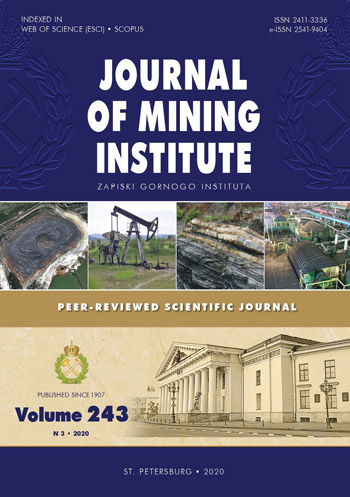Study of the technogenesis of the Degtyarsky mine by audio-magnetotelluric express sounding
- Ph.D. Senior Researcher Bulashevich Institute of Geophysics UB RAS
Abstract
The audio-magnetotelluric express sounding was performed at four sections crossing the mine field of the currently not functioning Degtyarsky mine. Field measurements were carried out by a universal broadband receiver “OMAR-2m” with active electromagnetic field sensors developed at the Institute of Geophysics UB RAS. Based on the obtained data, deep sections of the electrophysical parameters of the medium – apparent resistivity and effective longitudinal conductivity – are drawn. The nature of the geoelectric structure of the section allows mapping of the major lithochemical contamination plume and identifying the tectonic disturbance zones that drain aggressive mine waters. The mine waters of the Degtyarsky mine are a source of dangerous technogenic pollution. Despite the neutralization of surface runoff, underground routes of acidic water migration occur along tectonic cracks, primarily in the zone of the regional Serovsko-Mauksky fault. Tectonic zones in the mine area contain contaminated fissure-vein water, which is transited at a depth of 70 to over 200 m. Discharging ascending springs of such waters can be located at a great distance from controlled hydrological objects and pollute sources of drinking and household water supply. Urban development in the western and eastern parts of Degtyarsk does not fall within the distribution zone of polluted water. The southern part of the city is located beyond the watershed of the mine water flow area, but a danger of local contamination by tectonic disturbance zones remains possible. The worst environmental situation is observed in the northern outskirts of Degtyarsk, which falls into the area of heavy pollution of underground and surface waters. Besides, acidic fumes from the flooded Kolchedanny quarry can affect the health of city residents when emitted to the atmosphere.
